Botulinum Toxin Applications
Botulinum toxin was approved by the FDA in 1989 to treat neurological disorders and has been used in many subsequent cases. It was approved for cosmetic use in 2002 and to treat excessive sweating (hyperhidrosis) in 2004. Botulinum toxin applications, which have been widely used in cosmetic dermatology since then, received FDA approval in 2017 for treatment of forehead frown lines.
There are different toxins produced by Clostridium botulinum. BOTOX® contains botulinum toxin type A. It shows its effect by preventing signals from the nerve cells reaching the muscles, therefore reducing fine lines and wrinkles by paralyzing the underlying muscles. It starts to take effect 3-4 days after the injection and produces optimum results in 14 days.
The toxin disappears slowly, remaining in the muscle site where it was injected. It is considered that it does not migrate to other parts of the body when applied to the right area in the right amount. Therefore side effects are very rare. To date, no systemic side effects related to BOTOX® injections concerning organs have been observed. Skin side effects are rare and disappear within a few hours.
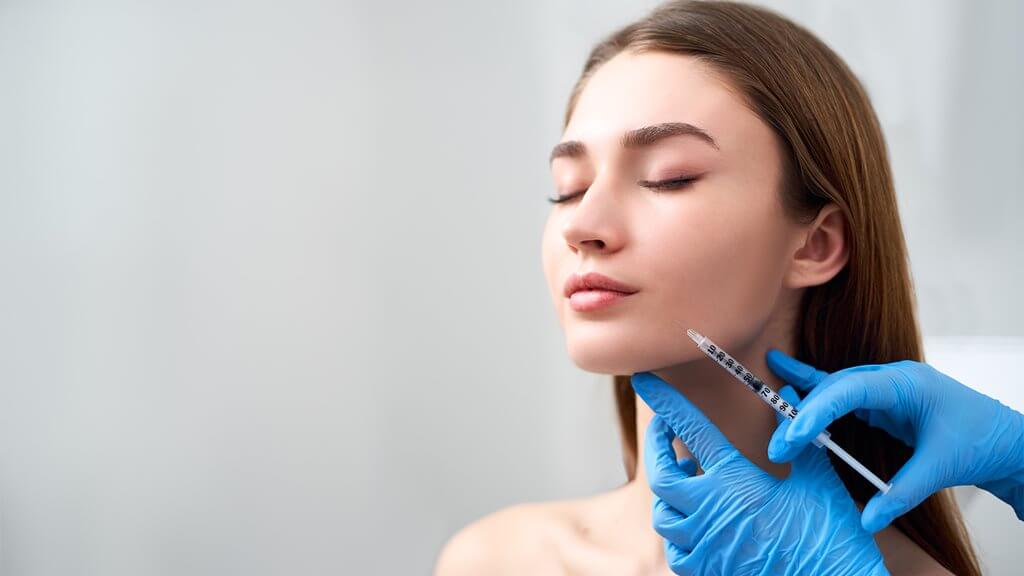
Common side effects that can be observed include headaches, mild edema and bruising. The bruising may take only a few days to heal. The duration of the effect of the botox is on average 4-6 months but it depends on each patient’s unique physiology. People who apply botulinum toxin should be trained in muscle anatomy and skin structure. The most common areas for the use of botulinum toxin are the frown lines between the eyes, the crow's feet at the sides of the eyes, the furrows of the forehead, the upper lip wrinkles, the creases in the neck, and the marionette lines.
It is also an effective treatment method for underarm excessive sweating (axillary hyperhidrosis) and excessive sweating of the hands and feet. Before injection, the sweating area can be determined with an iodine test; skin injections are made at certain intervals, with 50 units for each armpit. Toxins are not applied in cases such as neuromuscular disorders, allergies to BOTOX®, pregnancy, breastfeeding, and skin diseases at the injection site.
Before the application, the doctor and patient should talk about realistic expectations and target muscles and injection sites should be determined. Necessary precautions should be taken for the risk of infection throughout the application. Treatment by an experienced dermatologist and an appropriate setting are essential for effective treatment without side effects. Permanent well-being can be achieved with repeated applications.
BOTOX® was the first drug to use botulinum toxin.
Dermal Filler Treatment
Dermal fillers have been used in dermatology for nearly 30 years for its anti-aging effects to treat deep facial lines and facial deformities; it is also very effective in hand rejuvenation.
After the dermatological assessment of a patient, a personalized application scheme is created and the filling material is selected. There is a wide range of filler materials available on the market; it is preferred that the employed filler has been FDA (Food and Drug Administration) approved. Dermal fillers may be subdivided into autologous, biological, and synthetic types. Products containing hyaluronic acid, calcium hydroxyapatite, polymethylmethacrylate, and silicone can all be used. Hyaluronic acid is the most effective glycosaminoglycan causing skin elasticity; it has the unique capacity to retain water and hydrate the skin and also has an important role in cell growth. In 2003, Restylane was approved by the FDA as a source of hyaluronic acid. It is long-acting, easy to use, and ready to use. Skin testing before HA use is not required and it has minimal risk of side effects. The material is injected by using needles or blunt-tipped cannulas in serial punctures, linear threading, using fan or cross-hatching techniques. Fillers can be administered into the dermis, subcutaneously or onto the bone. Pain is reduced by anesthetic creams, subsequently cold compresses to help reduce redness and swelling. The techniques and products to be used vary with each patient, based on the anatomical features of the patient, the content of the filling, application area, and doctor's experience level. The length of time the effects of the dermal fillers will last depends on the product, the area of treatment, and the patient. Natural results that should be taken as a basis in all cosmetic applications should also be a point of focus. The doctor and patient should speak in terms of realistic expectations and possible undesirable side effects. The target in treatment should be the ideal cosmetic result to be achieved without sacrificing the natural look of the patient.
IPL
IPL stands for intense pulsed light. Unlike lasers, an IPL device sends out more than one wavelength of pulsating light. During the treatment, all chromophores, i.e. melanin in the epidermis, hair follicles, melanin, and hemoglobin are targeted simultaneously; therefore, IPL, which has a potent effect, has the high potential for side effects and should only be employed by experienced physicians.
What does IPL treat?
- Skin rejuvenation
- Sun damage
- Wrinkles
- Age spots
- Broken blood vessels and redness
- Hair removal
Application
During application, the eyes of the patient are protected with special glasses. Ultrasound gel is applied for the light to reach the skin more efficiently. Filters selected according to the patient's skin type and target lesions are placed in the cap and applied. The treatment is easy to tolerate. Each session time varies between 10-30 minutes depending on the width of the application area. The number of sessions varies depending on many factors such as the skin type of the patient, the type, size and thickness of the spot, and the depth of the vessel. Application intervals are 3-4 weeks. After the application, patients can continue their daily lives without delay; moisturizers and sunscreen are both recommended.
Pulsed Dye Laser (PDL)
Pulsed Dye Laser uses a concentrated beam of light at a wavelength of 595nm that targets blood vessels in the skin. PDR is widely considered to be the treatment of choice for a variety of cutaneous vascular lesions. Its efficiency and reliability in the treatment of birthmarks in pediatric and adult patients are proven and widely accepted as the gold standard method.
What does PDL treat?
- Port-wine stain birthmarks
- Hemangioma (noncancerous tumor made up of blood vessels)
- Broken blood vessels (telangiectasis)
- Freckles
- Facial flushing
- Rosacea
- Keloids and hypertrophic scars
- Warts
Apart from the above items, PDL is also used to treat many cutaneous vascular lesions.
Application
Bruising or dark purple coloration appearing on the skin after treatment is normal. Any bruising fades relatively quickly over a 1 or 2 weeks period. Vascular lesions become paler after each application.
-
Bruising (purpura): Bruising occurs in the area treated by the laser and usually clears within 1-2 weeks. At the end of this period, the skin returns to its normal color. In the red face and rosacea treatments, short-term redness is observed rather than bruising.
-
Swelling: Swelling in the application area continues for a maximum of 72 hours.
Moisturizer and sunscreen should be applied to the face in the aftermath of the procedure. Ice may be applied immediately after the procedure to prevent swelling in the area surrounding the eyes. After the procedure, the patient usually does not feel any pain. After 72 hours, a concealer can be used to cover the bruise. After the application, patients can immediately return to their daily lives.
The applications continue with each session. Achieving the desired result requires between 2-6 sessions on average. The intervals are recommended to be 4-6 weeks. The number of sessions to which a vascular lesion will be treated differs depending on the size, depth, darkness, type, congenital or subsequent occurrence of said lesion.
Chemical Peel
A chemical peel is a skin-resurfacing procedure in which a chemical solution is applied to the skin to remove the top layers. Chemical peels are used to treat wrinkles, fine lines, enlarged pores, and wrinkles caused by sun damage and aging, as well as to improve the appearance of mild and deep scars. Regular and multiple applications are required for a positive result. Various solutions such as alpha-hydroxy acids (AHAs), glycolic acid, lactic acid, carboxylic acids, Malik acid, citric acid, beta-hydroxy acid (salicylic acid), trichloroacetic acid (TCA), alpha-keto-acids (pyruvic acid), retinoic acid and resorcinol are used in treatments for peeling, as well as Jessner's solution consisting of salicylic acid, lactic acid, and resorcinol in ethanol. Phenol is used for deep peeling. The peeling solution is selected by doctors based on a patient's skin characteristics and target depth.
A patient’s face is cleaned before the procedure and then the solution is applied; after waiting for a specified amount of time it is wiped off with a neutralizing solution. At the end of the process, cold compresses can be applied if necessary. The process is completed with light moisturizers and sunscreen. Subsequent drying and rubbing movements are not recommended. In the following days, there may be very mild swelling, redness, and flaking. In some patients, these side effects may take 1-3 days to clear up; during this period, sun protection is essential.
BBL
BBL, meaning "broadband light," is an intense pulsed light source. It stimulates the skin with regular applications, rejuvenating skin and delaying aging of the skin. In studies conducted by Stanford University, regular BBL treatment has been proven to affect skin gene structures, thereby effectively rejuvenating the skin.
What does BBL treat?
- Sun damage
- Color irregularities
- Uneven skin tone
- Various spots, freckles
- Fine lines
- Rosacea
- Red face
- Broken blood vessels
- Poikiloderma of Civatte (redness and mottled pigment on the sides of the neck)
- Loss of elasticity and skin regeneration
Application Areas
- Face
- Décolleté
- Neck-shoulder
- Hand-forearm
- Leg
Application
Anesthetic cream is generally not required before application. The frequency of sessions varies according to the age of the patient and the precise condition of the skin.
During the application, the eyes of the patient are protected with special glasses. Ultrasound gel is applied for the light to reach the skin more effectively. Filters selected according to the patient's skin type to target lesions are placed in the cap and applied. The treatment is easy to tolerate. With patients having sensitive skin structure, additional coolers can be used to prevent further sensitivity.
Patients can usually continue their daily lives immediately after the procedure. People with sensitive skin may develop mild edema (i.e. swelling) with short-term redness. Makeup and concealers can be used immediately after the procedure. Patients are recommended to use sunscreen regularly after the procedure.
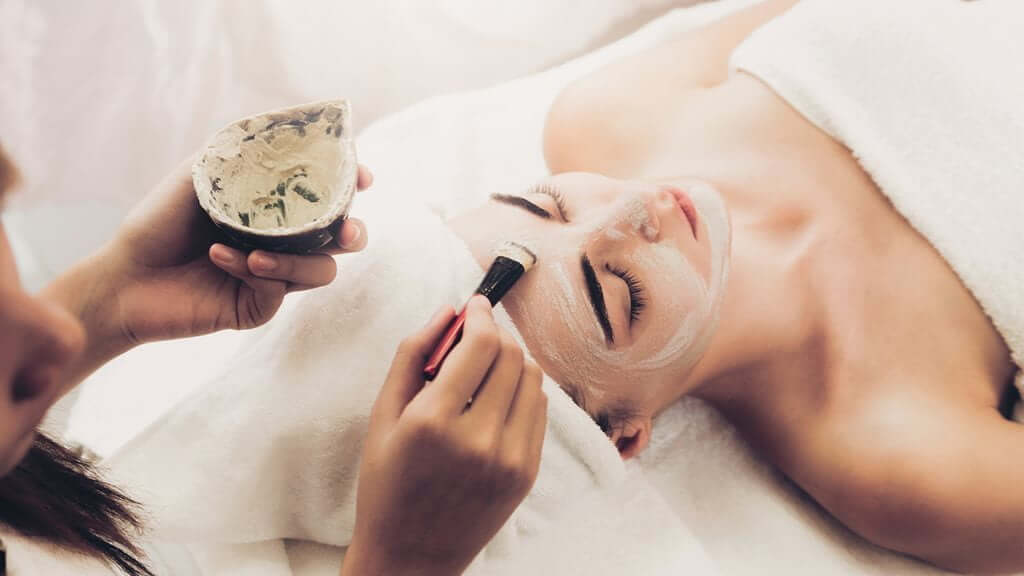
Enzymatic Peeling
Enzymatic peeling is the application of a complex product, which combines multiple active elements to treat skin spots. The aim is to peel the upper layer of the skin and subsequently remove dead skin cells, it also helps to renew the skin, remove fine lines and shrink pores.
This application is administered by a doctor to specific areas (face, neck, décolleté, hand, etc.) for a recommended period. Effects such as burning and stinging are not expected during the procedure. However redness, peeling, crusting, and sometimes blistering may develop in the days after the procedure. During this period, the patient must continue to apply the treatments recommended by the doctor and completely avoid the sun. The recovery period is 1-2 weeks typically; in some patients, this period may be extended.
The application is accomplished in a single session. Depending on the severity of the skin complaints some patients may be prescribed additional applications. Using the products recommended by the doctor before and after the session affects the success of the treatment as a whole. The patient should be protected from the sun throughout the treatment and use creams with a high protection factor. Applications such as laser hair removal and wax rub should not be administered for a week before treatment and at least 1 month after treatment. Washing with very hot water, solariums, saunas, and Turkish baths should all be avoided.
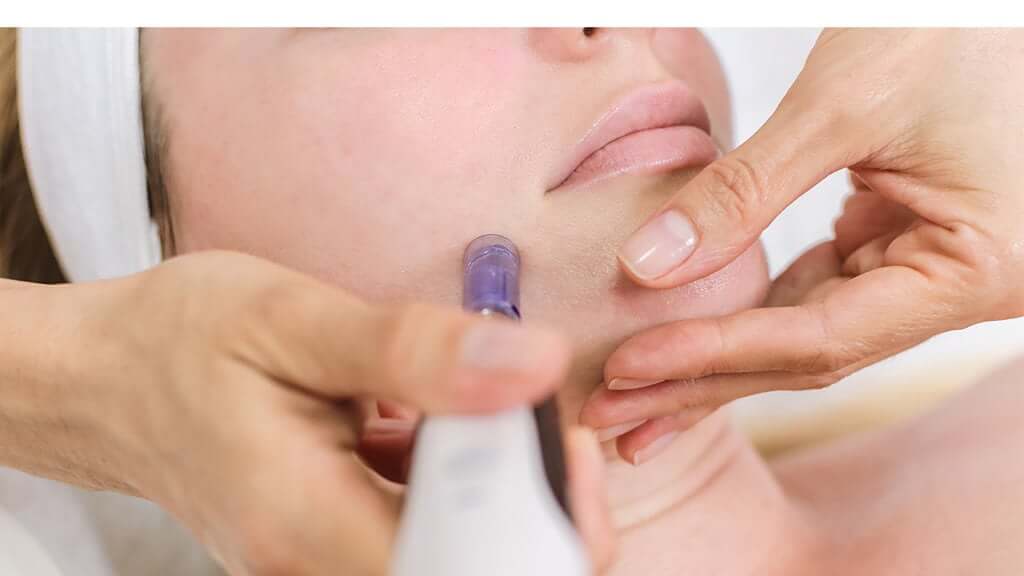
Fibroblast Cell Therapy
The application of fibroblast cell therapy, which is popularly known as stem cell therapy, involves the injection of young autologous fibroblasts from a culture containing serum which is extracted from the patient.
The reduction of collagen and elastin fibers in the dermis which comes from aging leads to folds and wrinkles in the skin; the aim is to eliminate these effects to achieve younger skin with the help of fibers like collagen produced by fibroblasts. Since the cells are from the patient's tissue, there is no risk of side effects. It is a good option for those who do not like the idea of foreign substances being injected into the skin such as dermal filling or mesotherapy.
50 cc blood and a small piece of tissue is removed from under the skin behind the ear and special cells called "fibroblasts" are cultivated under special conditions. The biopsy site heals within one week.
After the fibroblasts are cultivated in the laboratory, they are administered into the patient’s skin through small needles. After applying topical anesthetic cream, approximately 20 million cells are introduced into the skin with a special injection technique. Injections should be administered twice at 2-week intervals. The effectiveness of the application has been demonstrated by various compelling studies.
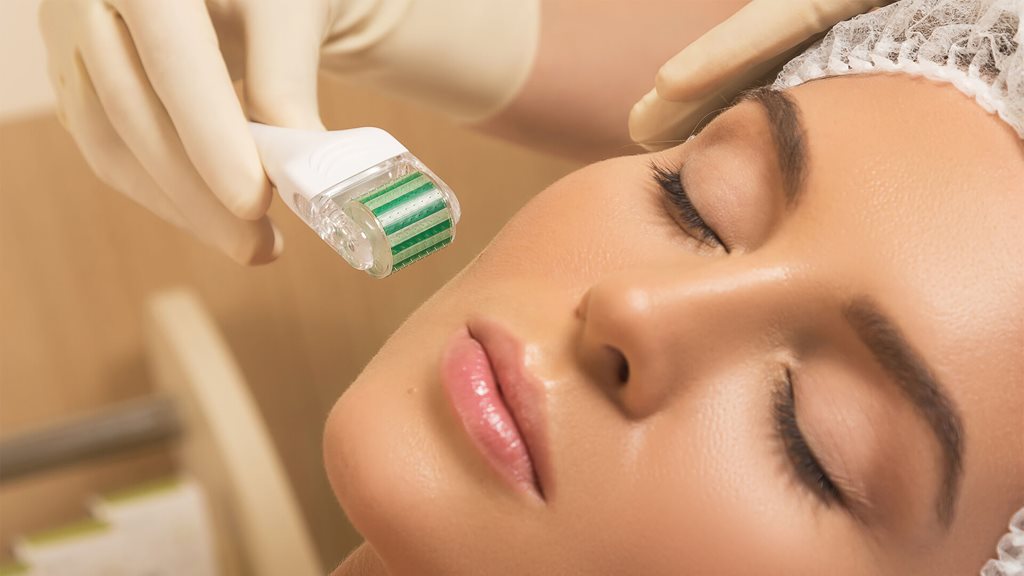
Mesotherapy
Mesotherapy is a technique that uses very fine needles to deliver a series of injections of prescription medicines, amino acids, and vitamins into the middle layer (mesoderm) of the skin. Michel Pistor, a doctor in France, developed this technique in 1952.; mesotherapy applications have been widely used all over the world for many years since.
The main cells in the connective tissue of the skin are fibroblasts. Collagen, elastin, and fibronectin synthesized by fibroblasts are the elements that tighten the skin, prevent sagging and thus work against aging. Mesotherapy applied for anti-aging purposes mainly targets this area; as a result, the skin looks brighter and more vivid. With repeated applications, the wrinkle depth decreases and the skin becomes firmer. The application can be made on the face, neck, décolleté and dorsum of the hand. Mesotherapy is also used for removing unwanted fat and to treat hair loss. While focussing on hair loss, Mesotherapy provides nourishment of the follicles by improving blood circulation and delivering nutrients.
Mesotherapy can be used as a supplement to treat hair loss, facial rejuvenation, regional fat deposition, cellulite, stretch marks, facial spots, and scars. Solutions containing more than one active ingredient are used to ensure effectiveness. They generally contain various vitamins, minerals, amino acids, and antioxidants. Solutions including hyaluronic acid also support the skin by providing fullness, moisture, and elasticity. These Mixtures are prepared by the doctor and commercial solutions are also used. Repeated sessions may be required to achieve the desired results.
In facial applications, solutions are injected under the skin at certain intervals with a specially produced application gun or fine needle tips. In deep wrinkles, the line injection method can be used. Mesotherapy gun application is preferred for the scalp. It is easy to tolerate. Since the needle tips are very thin, side effects such as bruising rarely develop. There is no pain during the application although there may be some sensitivity. There are no major side effects reported. After the treatment, patients can return to their daily activities and can even apply make up the day after the procedure.
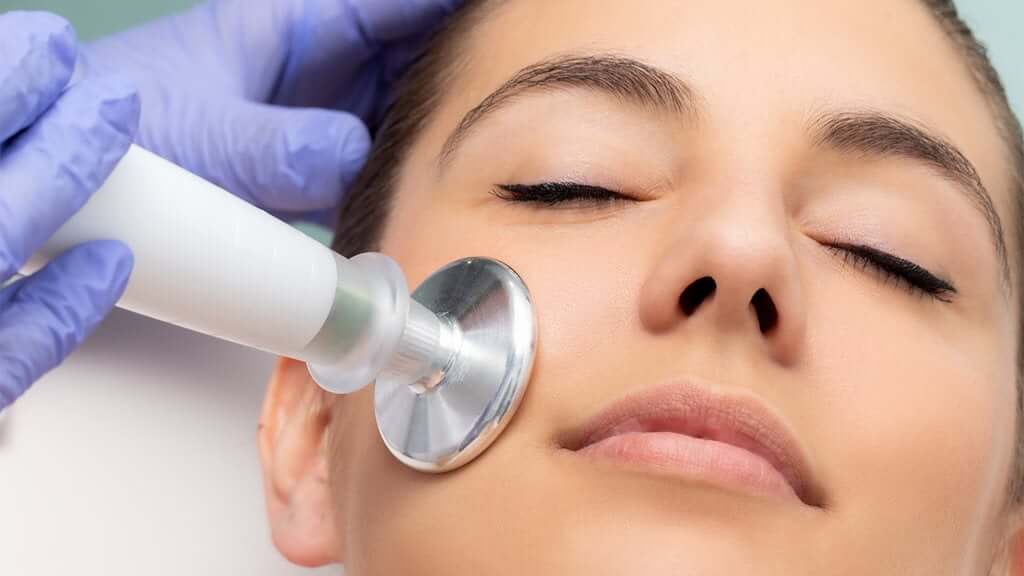
Microneedling
Microneedling is the creation of microscopic channels on the skin’s surface with very fine steel needles placed at the tip of devices such as dermastamp, dermaroller or dermapen. The skin is renewed with various growth factors and cytokines are released during the repair of artificially formed wounds. It can be effective by itself, but can also be combined with other methods involving growth serums, hyaluronic acid, mesotherapy, as well as PRP. The products to be applied immediately before or after the opened channels ensure optimal effects. Microneedling may help with issues like wound and acne scars, large pores, stretch marks, fine lines, hair loss, and aging skin. Treatment is applied in sessions. Session intervals are variable depending on the specific purpose and can vary between 2-6 weeks.
Applying topical anesthetic cream can alleviate any pain that would otherwise be experienced during the procedure. Pinpoint bleeding is normal and the redness that develops after the procedure usually subsides within a few hours. In some individuals, mild redness and mild edema may continue for 1-2 days. Following the procedure, recommended creams should be used; it is necessary to protect oneself from the sun with extreme vigilance in the days after the session.
Microneedling Fractional Radiofrequency
Microneedling Fractional Radiofrequency is most effective in the treatment of scars, skin rejuvenation, and skin tightening. The microneedles penetrate under the skin to deliver radiofrequency at the target location.
The energy delivery system that consists of gold-plated steel needles deliver bursts of radiofrequency energy through the tip; that’s why it is also known as ‘gold needle therapy’. Healing activity in the fractional micro holes created by the gold-tipped microneedles and the radiofrequency trigger the collagen and elastin production in the dermis resulting in a decrease in scars and lines, tightening of the skin and skin rejuvenation.
Since the radiofrequency energy is delivered when the microneedles are in the dermis, the top layer of skin is protected. Protecting the skin surface (epidermis) shortens the recovery time; the patient can return to his/her social life in a very short period.
What does Microneedling Fractional Radiofrequency treat?
- Acne scars
- Surgery and wound scars
- Pore tightening
- Wrinkles
- Skin tightening
- Neck-jowl and décolleté recovery
- Stretch marks
- Reducing sagging in the arms and legs
- Excessive sweating (hyperhidrosis)
Application
Especially with the correct application of a good topical anesthetic, the treatment is highly tolerable. The doctor adjusts the depth of the needles and the energy to be delivered according to the structure and specific attributes of a patient's skin. The practitioner should be experienced in skin structures and anatomy. In this application, where many needles, although small, are penetrating the skin, the practitioner must also follow the rules of medical hygiene.
The redness that occurs after the application improves within a few hours. In some patients, a light pinkness and slight edema may continue for several days but this will not prevent one’s social life. Patients can apply makeup the next day.
Microneedling Fractional Radiofrequency
Microneedling Fractional Radiofrequency is most effective in the treatment of scars, skin rejuvenation, and skin tightening. The microneedles penetrate under the skin to deliver radiofrequency at the target location.
The energy delivery system that consists of gold-plated steel needles deliver bursts of radiofrequency energy through the tip; that’s why it is also known as ‘gold needle therapy’. Healing activity in the fractional micro holes created by the gold-tipped microneedles and the radiofrequency trigger the collagen and elastin production in the dermis resulting in a decrease in scars and lines, tightening of the skin and skin rejuvenation.
Since the radiofrequency energy is delivered when the microneedles are in the dermis, the top layer of skin is protected. Protecting the skin surface (epidermis) shortens the recovery time; the patient can return to his/her social life in a very short period.
What does Microneedling Fractional Radiofrequency treat?
- Acne scars
- Surgery and wound scars
- Pore tightening
- Wrinkles
- Skin tightening
- Neck-jowl and décolleté recovery
- Stretch marks
- Reducing sagging in the arms and legs
- Excessive sweating (hyperhidrosis)
Application
Especially with the correct application of a good topical anesthetic, the treatment is highly tolerable. The doctor adjusts the depth of the needles and the energy to be delivered according to the structure and specific attributes of a patient's skin. The practitioner should be experienced in skin structures and anatomy. In this application, where many needles, although small, are penetrating the skin, the practitioner must also follow the rules of medical hygiene.
The redness that occurs after the application improves within a few hours. In some patients, a light pinkness and slight edema may continue for several days but this will not prevent one’s social life. Patients can apply makeup the next day.
Nd:YAG Laser
Neodymium YAG (Nd:YAG) laser has a wavelength of 1064 nm and can reach deeper layers of skin tissue than any other type of laser. This laser system uses water, melanin, and hemoglobin as targets, and is used extensively in the dermatological field of medicine to treat a wide range of skin disorders. Skin regeneration, as well as vascular lesions, acne, Rosacea, wart and nail fungus treatments, are the practices we frequently perform in our clinic.
What does Nd:YAG Laser treat?
- Non-ablative skin regeneration (skin regeneration without injuring the surface of the skin)
- Reticular veins (up to 4 mm thick)
- Broken blood vessels (telangiectasia)
- Spider veins
- Cherry hemangioma
- Acne
- Scars
- Nail fungus
- Warts
- Hair removal
A topical anesthetic cream may be applied before application. Coolers are used to protect the skin surface during the process; after the treatment, carbon creams and sunscreen are both recommended.
Q-switched (QS) Nd:YAG Laser
Q-switched laser systems are effective because they confine their energy to treated pigments. Q-switched Nd:YAG lasers in our clinic produce two wavelength beams of 1064nm and 532 nm green-light (KTP) enabling reliable delivery of giant laser pulses with the very high beam quality to effectively remove superficially located pigment and deeper pigments. This method is most commonly used in the treatment of melasma, sunspots, birthmarks, and tattoo removal. Different doses are used according to the color of the pigment and the skin tone of the patient. No scabs occur while treating melasma which is also known as “mask of pregnancy”; a small scab or darkened skin may appear after treatment of age spots, freckles, and sunspots but it will fall off after a short period. During this period, the patient is prescribed moisturizers and sunscreen that contain skin-healing properties.
With QS, hair bleaching can be applied for fine hairs that can’t be targeted by other lasers. After this process, the hairs become invisible and some of them fall off over a period of 2-3 months. This method can be applied to all skin types every season and it can be combined with various specific spot treatments.
What does Q-switched Nd:YAG Laser treat?
- Melasma
- Mask of pregnancy
- Age spots, sunspots (solar and senile lentigo)
- Freckles
- Café au lait spots
- Tattoo removal
- Hair bleaching
This procedure is easy to tolerate. The application consists of several sessions; achieving the desired result takes between 2-6 sessions at 4-6 week intervals. Sunscreen is recommended to use after treatment.
Erbium:YAG Laser (Er:YAG Laser)
The Erbium:YAG Laser, with its 2940 nm wavelength at the peak of water absorption, causes less thermal damage to the skin comparatively speaking; laser energy is delivered at the “ablation threshold” of the skin, without the side effects seen with the older laser models.
With the Erbium:YAG Laser in our clinic, both ablative (controlled skin damage) and non-ablative (micro-damage by protecting the epidermis) applications can be performed. Er:YAG Laser which can affect both the upper layer (epidermis) and the lower layer (dermis) of the skin with different caps attached to the device, allows the location of the damaged skin surface to be replaced with fresh new skin. Fractional heads perform ablation without peeling the epidermis; since the tissues around the micro channels opened by the laser remain intact, the skin healing process will be significantly faster. This process is used for treatments of deep lines and wrinkles, sun damage, acne scars, wound scars and burn scars. Besides, it is effective in the treatment of many dermatological conditions such as seborrhoeic keratosis and other benign skin growths, warts, and xanthelasma thanks to its ablative heads.
After treatment, redness, sensitivity, and scabs may appear on the skin. Carbon creams and sunscreen are recommended. The structure of the redness and scab varies according to the depth of the lesion, the depth of the application, and the dosage used. Depending on the condition, the treatment can be repeated for 3-9 sessions at 3-4 week intervals.
What does Er:YAG Laser treat?
- Superficial and deep peeling
- Deep lines and wrinkles
- Acne
- Stretch marks
- Wound marks
- Hypertrophic scars
- Various lesions (seborrhoeic keratosis and other benign skin growths, warts, etc.)
- Non-ablative skin regeneration (no damage on epidermis)
- Skin rejuvenation and tightening
- 4D facial treatment
What is 4D Facial Treatment?
4-dimensional facial treatment is a non-invasive rejuvenation program using different laser modalities such as Er:YAG Lasers and Nd:YAG Lasers. The biggest advantage is that no substance is injected into the skin; it is designed to stimulate and increase long-term collagen regeneration without the use of injectables or surgery, reducing wrinkles and spots, and tightening the skin.
The first dimension is “SmoothLiftin”. SmoothLiftin is an intraoral treatment for controlled and gentle bulk-heating to stimulate collagen contraction with an Er:YAG Laser using a non-ablative mode. It is applied inside the cheek and lips.
The second dimension is “FRAC3”. Nd:YAG Laser creates a self-induced 3-D fractional effect which focusses on areas of pre-existing skin damage. Heat diffusion stimulates new collagen synthesis; it is applied from the outer part of the face effectively restoring more youthful texture and clearer complexion.
The third dimension is the “Piano” mode which is applied from the outer part of the face. Nd:YAG Piano mode is a new bulk heating approach that does not cause high initial temperature peaks in the epidermis. The temperature of the epidermis is monitored with special thermometers. This bulk heating mechanism concentrates on tightening in the jowl area by stimulating new collagen growth.
The fourth dimension “Ultralight Peel," utilizes Er:YAG lasers to polish and refine the outer layer of the skin. It helps to reveal brighter and smoother skin.
4D Procedures are easy to tolerate, taking only about 45-50 minutes. Topical anesthetic cream is not required before application, except around the eyes and lips if those areas are points of focus.
After the procedure, patients can continue their daily lives. Moisturizers and sunscreen are prescribed. 4D skin rejuvenation can be administered in the summer months. Session intervals vary depending on the patient, but 3-5 sessions are generally recommended at 1-month intervals. Having protective sessions in the following years will help maintain a patient’s well-being.